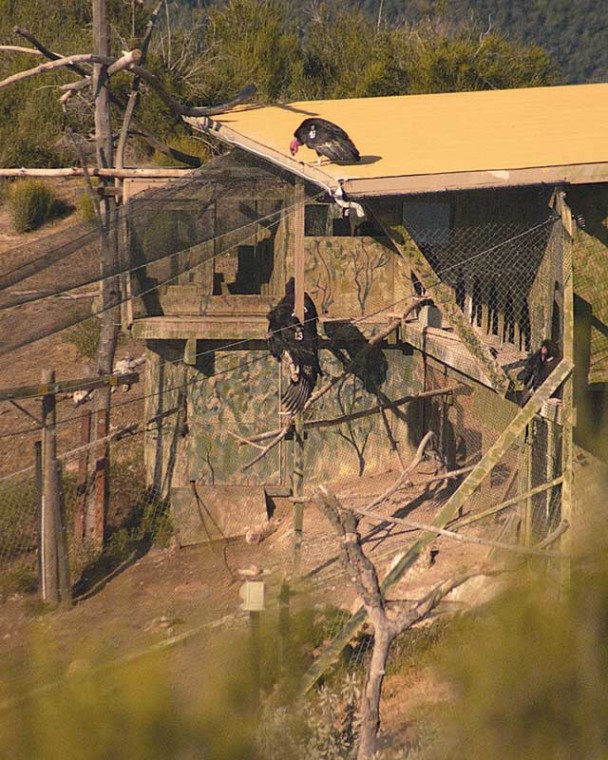
Hollister
– Two California condors from Pinnacles National Monument are
back home awaiting release after being treated for the highest
blood-lead levels ever observed in the park’s endangered species
flock.
Hollister – Two California condors from Pinnacles National Monument are back home awaiting release after being treated for the highest blood-lead levels ever observed in the park’s endangered species flock.
Carl Brenner, the park’s supervisor and interpreter of education, announced Thursday that the condors are doing better after undergoing a special detoxification process at the Los Angeles Zoo. A year ago, 11 condors from the monument were found to have elevated lead levels and given calcium to help recover.
“We try to get the blood system cleaned as quickly as we can,” Brenner said.
Female California condors Nos. 306 and 318 received the treatment. No. 306 is the oldest bird in the Pinnacles flock, which includes 13 condors. The park is waiting to release two more juvenile condors.
In June, park officials observed birds from both the Pinnacles and Big Sur condor flocks feasting on a dead pig south of the monument’s boundaries, Brenner said.
When biologists ran a metal detector over the pig’s carcass, they found lead bullets, Brenner said. Biologists trapped eight of the condors and tested them for lead poisoning in early July.
The tests showed that condor No. 306 had 164 micrograms of lead per deciliter of blood, Brenner said. Condors with lead levels of more than 40 micrograms of lead per deciliter of blood are considered poisoned.
Big Sur condors were tested two weeks later. One of the Big Sur condors was found to have nearly four times the blood-lead levels of Pinnacles condor No. 306, and also was sent to the Los Angeles Zoo for treatment, according to park officials. The Big Sur condor has 610 micrograms of lead per deciliter of blood, the highest ever recorded on the Central Coast, Brenner said.
It was not the first time condors from either flock have been treated for lead poisoning, Brenner said.
“It unfortunately happens all too often,” Brenner said.
On July 11, a consortium of scientists announced they believed ammunition is the primary pathway for lead to enter the endangered species’ system. Isotopes found in lead bullet samples in California and in the blood of condors were significantly similar, said Dr. Don Smith, chairman of the department of toxicology at the University of California, Santa Cruz. Blood collected from the California condors before and after the birds’ release showed increased lead levels, Smith said.
Brenner said the park is continuing to work with UCSC to prove that lead ammunition is the primary cause of increased blood-lead levels in condors.
Lead infects the condors’ bloodstream two ways, Brenner said. Condors ingest rocks to help digest food and will eat lead bullets from carcasses left by hunters, Brenner said. The lead enters the condors’ bloodstream directly, but also enters the birds’ bone marrow, he said. Lead can then seep from bone marrow back into the condors’ bloodstream, he said.
Kelly Sorenson, executive director of the Ventana Wildlife Society, said eliminating lead ammunition use is key to the California condor’s survival.
“Though they’re flying free in the wild, they’re not really living free in the wild,” Sorenson said earlier this month.
The California condor rehabilitation program began in the 1980s when the species nearly became extinct. In 1987, federal biologists captured the remaining 22 California condors and started the program.









